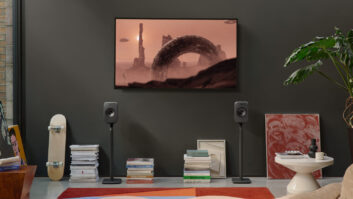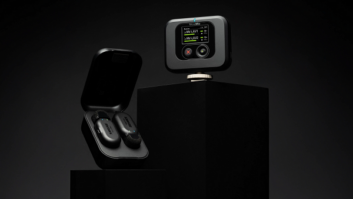Dubai, United Arab Emirates – Noel Lee, the man that built an empire on audio and video cables is going wireless.
Here to promote Monster Cable, HDMI and the future of A/V connectivity, Noel Lee told attendees at International CES/Hometech 2008 this week the company is launching a wireless audio/video distribution product that is due in stores for the CEDIA Expo timeframe in September. Noting the irony of the No. 1 cable brand going to wireless distribution, Lee joked that a quote in a recent Time magazine article saying he wasn’t afraid of wireless “was a lie.”
“Yes we’re coming out with wireless and it’s been a long road,” Lee told TWICE on opening day of Hometech. The same kinds of issues that dogged HDMI — copyright protection, robust video quality and quality of service — also exist in the wireless world with the added baggage of potential wireless interference. Lee said the company’s approach, using an ultra wideband solution, addresses the issues successfully and has overcome challenges associated with HDCP. “The challenges are copy protection for content just like with the wire,” he said. “Sometimes it will work, sometimes it won’t work.”
Monster will officially introduce the product at Digital Downtown the second week of June in New York. Lee wouldn’t disclose the technology partner for the ultrawideband (UWB) solution, saying only that it was a major technology company and the joint announcement will be made in a few weeks. “We had to pick the right people to partner with and all the quality parameters had to be fulfilled.”
The solution is 1080p-ready, Lee said, and that the system will up-convert lower resolution signals to 1080p. “We believe any wireless system has to be 1080p,” he said. “Otherwise the wireless solution will be behind the technology. People expect from Monster that when we come out with something it will be right.”
The companies also had to overcome the challenge of quality of service. Digital transmission presents a spate of technology issues not present in the analog world, he said. “Consumers are used to wires so they don’t want to see pixelization. They don’t want to see that if you’re downloading your email or a big file, that’s it’s interfering with your HDTV transmission.”
Wireless is one aspect, getting the signal to other rooms is another. Lee said the solution uses UWB in room and then uses a home’s existing coaxial cable to get the signal from room to room. “Same room is different from room to room,” he said. “Room to room is going to revolutionize how we do custom installation in terms of cost. Right now a lot of custom is done not in HD when you go room to room whether you’re using RF or composite. This way you don’t have to run any wires. That’s the dream of any company going into wireless.”
Monster chose not to go wireless from room to room because he said current technologies using Wi-Fi have not provided an experience that’s acceptable to consumers. “Through the air you have Microsoft and other people doing low-level video through Wi-Fi and other technologies that have questionable [quality of service] right now,” he said. “Anything through the air over RF is prone to other interference: from the garage door opener to other Wi-Fi products. We had to get out of the range so that’s why we went with UWB.”
The system uses compression but Lee said its “low-level compression.” He claims an unlimited range for the system because any signal transmission out of the room goes over coax which has no signal degradation issues. Data rate is 1080p-capable, he said, at 4.9 gigabits per second.
The product will be available at retail, and “it won’t be inexpensive,” Lee said. “I expect it will be a stronger custom play than it will be a retail play.” While the product will be offered to full distribution, “it be somewhat limited by pricing.” It’s no surprise that the cable replacement product will cost consumers more than a comparable wired solution. “We estimate $600 for one pair of boxes and $200 for each additional room,” he said. “We’ll upscale all different sources. There are two HDMI, an S-Video and a composite input. Everything coming out of the box will be 1080p.”
Providing a wireless solution is a natural extension of the cable business, Lee said. “Everybody’s doing installations: Best Buy, Circuit … in hard-to-get places. There are certain situations when only wireless will do — like marble installations and above the fireplace where it’s extremely difficult to get wire. We want to be there.”













